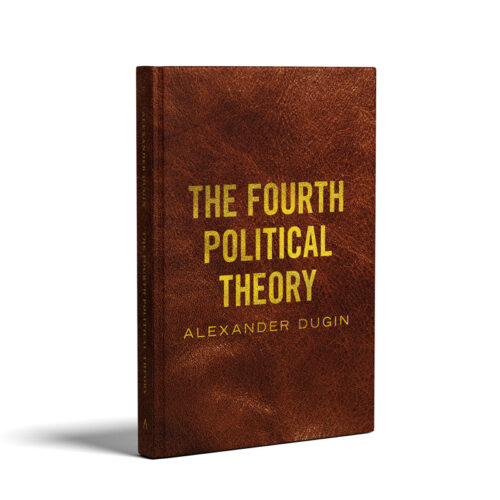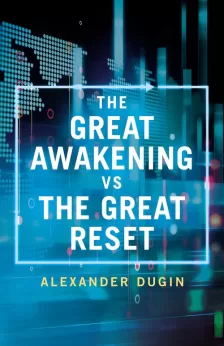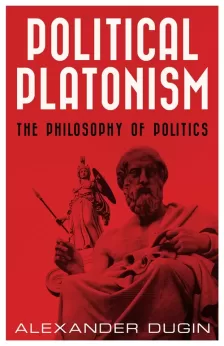In the manifestos of the Italian futurism, we face an assault on every ideal that is at the foundation of an exoteric conservative or nationalistic worldview. For the futurists, the past is a weakness: the art, morality and traditions of generations past are but chains which bind the artist and his heroic will in the foul catacombs of the dead. Instead the futurists proclaim a man of tomorrow, who at the threshold of modernity embraces every new, titanic power to its fullest extent, who does not hesitate to sacrifice all memories of olden times in order to rise towards the endless, empty skies. Art is no longer to be the painting hanging in a museum, but rather the smoke of industries, the roaring of fighter planes and the body of the brave Arditi, torn apart by artillery – the new god of thunder.
On the surface, the futuristic art and its ideas might force some of the Right to renounce the movement; the futurists saw a higher beauty in the chaotic experimentalism of modernity than in the classical concepts of harmony and perfection, a higher virility in the passionate and short experience of the lover than in the stable bonds of family and marriage, and a higher dignity in the act of the absolute individual than in the care for the people and its traditions. They dreamed of a seemingly paradoxical nationalism without a past, which did not have its origin in the dull masses of the people, but rather in the heroic hearts of the chosen few, of the overmen of tomorrow.
In some senses, the futurists pushed modernity to its absolute limit, but it it is not difficult to sense the heroic qualities of their quest. Their writings are a summons toward sublime heroism and a beautiful death at the end of youth, and their paintings embody bravery, showing the pure act rendered through the explosive shrapnel of geometric forms in a dynamic sweep. The aim of this essay is to analyse the futurists from an Evolian point of view, and show how they almost managed to manifest a transcendent heroism – through the forms of modernity, rather than against them – and why they ultimately failed.
The futuristic revolt against the past stems from their identification of art with the artist. Like Nietzsche, they do not see any inherent value in external forms or ideas, but rather see value as something originating internally, something manifested through action by a superhuman will. Beauty is for the futurists not an abstract idea that can be captured by academicians or immortalized through a work of art, but rather a living thing, inseparable from the struggle and experiences of the artist himself. Art is in essence an act, and when it is completed, it is but a faint memory. Thus the elevation and study of old masters gives rise to a false beauty, in which the artist does not take part of his true art, but rather its residues; to emulate the old masters is to live through corpses instead of one’s own, breathing body. So to take past forms as the sole origin for one’s art becomes a complete castration of that art’s true essence. Thus the futurists proclaim that “There is no longer any beauty except the struggle. Any work of art that lacks a sense of aggression can never be a masterpiece.” – Art, politics and life itself are to be viewed as different faces, different struggles of the same, absolute will. But what is this will?
Evola himself characterized futurism as a ‘chaotic dynamism’, which would turn this will into a brute force stuck in a titanic rather than heroic worship of the future. It would thus be easy to dismiss futurism as an overreaction against the feminine and superficial – in a word, bourgeois – culture of Europe before the First World War. The futurists often declared sentimentalism to be their greatest enemy – the weakness characterized by a romanticizing of beauty, of a perfect past and its heroes, together with a frail body and the incapability of recreating the life of those heroes in one’s own flesh. The result of this sentimentalism is an art which is empty, mere petty aesthetics and abstract, passive ideals, easy to digest by the bourgeois in his salon. It is an art of a dead Europe.
To be sure, there is no worth in such a bourgeois mentality, but the fact that weak men cannot inherit and live the traditions of the past does not necessarily mean that the past in itself is worthless. Why should the past not be able to teach us about heroism, to show us how we should act in our time? Why should we not be able, for instance, to perceive the conquering spirit of the Caesars in their triumphal arcs – why should these be dead forms, if we would possess the will to light again the flame of Empire?
There is no logical reason for this, but I believe there is a heroic reason – an instinct to embrace a virile impulse in modernity, and to push it to its absolute extreme, playfully, as if it was just game. The Faustian curiosity to see what lies at the future side of the horizon of time, no matter the cost and sacrifices. I aim to show that this is an act which destroys one’s ties with the forms of tradition, but which in its pure, heroic nihilism is also unbound and self-sufficient. Viewed in this manner, the futuristic will becomes more than a antithesis towards sentimentality; it becomes a genuine yearning towards something absolute, and which thus strives towards the transcendent origin of all traditions. It was a will, with more potential than any exoteric preservation of forms, to break through the descending cycle of modernity.
At the core of Tradition lies the duality of matter and spirit, of Becoming and Being. Firstly, Being is the foundation of everything, and the goal of every true Becoming – an act which does not act towards Being is an act reduced to an empty form and worthless illusion, and it results in materialism, degeneration and modernity. Secondly, Being cannot be a part of Becoming, as a single being, with beginning and end, can’t be the origin of the world which contains it – an act which confuses Being with something Becoming results in idolatry and pseudo-tradition, and it might as well not know Being at all. Being is transcendent and devoid of all determinations, and without Becoming, it is indeed pure nothingness – but through Becoming it lives, it manifests itself. Tradition is the act, whose origin is in Being and which transcends and elevates Becoming into a true manifestation. Tradition is to truly become who we are.
Now what does this make of the past and the ancestors? Every people, religion and civilization is something Becoming, and can only interpret Being, express it through the conditions of their existence and the unique qualities of their race. When Being is at the centre of existence, these expressions are true, absolute, and show the way towards transcendence – they are Tradition. But if they have forgotten Being, they are but empty forms of the lowest plane of existence. Evola realizes that Tradition cannot be an abstract teaching or a specific form to be accepted passively, but that Tradition demands of its user a constant experience of Being and an active search for transcendence. The spirituality of Evola is not faith or dogmaticism, but rather heroism. Either through action or knowledge, it is only the heroic struggle of the chosen few, the true Aryans who possess a spiritual race above and beyond their material race, which can reach true Tradition. They are those who experience and live Being, those who show the way to their kin of a lower spiritual race, and they are the true and only origin of every Traditional people, religion or civilization.
So the past and the ancestors in themselves are neither the source nor essence of Tradition, and if Europe has forgotten Being, if it only knows the material forms of the past, if the old gods are truly dead, then what fault is there in revolting against the past? Is it not greater to search for that pure act, that transcendent heroism which knows no bounds and which is the source of everything valuable and beautiful in life? Evola himself had no patience for that backwards mentality which tries to recreate dead cultures or religions in order to attain a tradition it does not know how to live; he instead sought a way to manifest the spiritual essence of these past, dead things in his own time. If the violent nihilism of the futurists uncovered purity, is their revolt against the past and their nation of tomorrow not greater than the sentimental love any ordinary nationalism or conservatism shows toward the past?
To demonstrate that this is the true essence of futurism, the work Mafarka The Futurist is essential.
Written in 1909 by Filippo Tommaso Marinetti, the creator and leading figure of futurism, it is one of the movement’s earliest and most virile works. It is a violent and erotic story, which incorporates both mythical themes and brave avant-gardism in the depiction of an African warlord, the Arab Mafarka, who conquers the continent for the sake of his own will to power. But in his quest, Mafarka is constantly tormented by Woman – on one hand he seeks her through the sexual union and pleasure of love, on the other hand he is disgusted by her. His solution is an ascetic renunciation of Woman: he seeks to build a son of metal, a son to whom he himself will give birth, without the need of Woman. Through his hermaphroditic death he gives life to the bird Gazourmah, who rises to rule over both heaven and earth.
The mythical themes of the novel resembles the Aryan concepts of sexuality, asceticism and transcendence as depicted by Evola. It is unclear whether Marinetti consciously used traditional themes in his prophetic depiction of the futurist spirit, or if he neared them unconsciously through the heroic essence of futurism, but if we accept the resemblances and apply Evola’s teachings, the story of Mafarka unfolds as a story about the will to reach beyond, and futurism reveals itself as a movement of transcendent virility. Mafarka wants to reach beyond his enemies, beyond himself and beyond the whole world of Becoming, in order to carry Becoming upwards, back to pure Being, where Being and Becoming are united in their hermaphroditic origin. This interpretation of futurism goes further than Evola himself would, and maybe I am misguided, but I believe that it is able both to adequately explain the artistic and political theses of futurism, and to give an origin to the art of the futurists which matches its aesthetic impact.
If we view Being and Becoming through the suggestive duality of Man and Woman, as depicted by Evola in his metaphysics of sex, the original unity of Being and Becoming in Tradition is represented by the hermaphroditic unity of Man and Woman; but when Woman divides herself from Man, the fall of existence commences. Unity is shattered into multitude, time and space determine existence and man at bottom appears as someone dependent on matter and its forms, who believes it to be the his whole being. Woman has devoured and dominated Man, and he has become an individual, a hunger forever yearning for the illusions of matter. This is the essence of our dark age, the Kali Yuga, but there is a possibility of awakening, in which Man once more lays Woman under himself, devours her and carries her upwards. This is the turning point of the cycle, the end of times and the twilight of the gods; the domination of Woman is inseparable from the destruction of the world she has created, from the death of the individual and every single being, but at the end of the process, transcendent unity is reached. The force of Woman should not be condemned from any moralistic standpoint – she is beyond all morals – but rather it is the unity between Man and Woman which is required, in order for all illusions to vanquish, and a new golden age to dawn.
Male and female are not merely two genders, two biological facts, but rather the manifestation of the two powers, Being and Becoming, as Man and Woman. Thus the sexual encounter is not primarily the false immortality promised by the prolongation of a material species, but rather a potential experience of transcendence and the true, Aryan immortality of unity beyond the two. Evola shows how this transcendence is present in even the most profane love, but also how every transcendence has an inherently sexual character. In transcendence, the male Being once more conquers the female Becoming, and the heroic power needed for this feat is virility, understood as a transcendent and spiritual force.
Now Mafarka’s simultaneous yearning towards and disgust for Woman is representative of the relationship between Man and his separated Woman in the Kali Yuga; on one hand Woman is the other part of existence, and he needs to be reunited with her and carry her upwards towards unity, but on the other hand she is the world of matter and darkness, and every contact with her is a loss of virility and an attachment to an illusionary existence. To wholly devour Woman, and not be devoured by her, is an extraordinary spiritual feat at the bottom of the cycle, and thus the greatness Mafarka seeks forces him into the celibacy of creating his own son.
To fully understand Aryan celibacy, we must first follow Evola’s distinction of Woman into two different manifestations. The first is the mother and the wife, which Evola places as the lower of the two, as she seeks to bind man to herself, and force his unbound virility to serve the world of Becoming and the sub-personal species. The other is the lover, who can bring forth and serve the super-personal virility in Man’s desire. It is also clear that the lover demands a higher type of man, lest she should be dangerous and dissolve him in his base desires: the higher the form is in Tradition, the higher is its demand of spiritual race in its user. It is known in Tradition that men are of different essences, of different spiritual races, which they must realize in their given way to become who they are, and thus manifest Being. Just as there are different castes in the traditional society, there are different tiers of love. That Evola sets the lover higher than the mother does not mean that there should be no families, but rather that the higher man must seek the lover as sure as the lower must seek the wife and family.
At the highest form of love, the one practised by heroes, the lover transcends from being an individual woman of the flesh, to a spiritual woman, woman as the pure power of Becoming. This is the myth of the Valkyrie, the divine woman who the hero attains or rescues. In the reunion with his Valkyrie, man no longer meets woman through pleasure, but through action and power, which are the essence of our temporal world, of the female Becoming. In his heroic death, he loves Becoming through the sacrifice of everything in his individual and the destruction of every bond to Becoming, and thus Woman does not bind him, but instead carries him upwards, to Valhalla, the home of the gods and heroes. This spiritual woman is also the kundalini of Hinduism, the goddess who rests within the man himself, and who can be awakened and forced upward by man’s ascetic struggle until they are reunited under the sign of Being. The love of the spiritual woman is a love which does not bind man to a lower existence, but instead lets him reach a hermaphroditic state within himself, within his Being, where he through the heroic death or enlightenment gives birth to the unity beyond man and woman.
Evola makes a distinction between a life-denying, moralistic asceticism, and an Aryan asceticism which is larger than life. The first is that of the slave, which has its origin in the neurotic fear of one’s ‘sinful’ body and a lack of virility, while the second is that of the hero, which has its origin in a high virility and the feeling that this body and world are not enough. An ascetic of the second type conquers Becoming by defeating every power it has over the part of him that is true Being; he realigns the original relationship between Being and Becoming, and thus returns to the divine and heroic realm which he has always felt to be his true home. From this higher point of existence, he can if he wishes return to the lower world of Becoming, and his act becomes the true manifestation of Being, the heroic synthesis between matter and spirit. Celibacy in the Aryan tradition, understood as the heroic love of the spiritual woman, is an asceticism of the second type, which denies the material woman the seed, the male power, in order for it to awaken the spiritual woman and force her upwards towards reunification. This celibacy has been common amongst the warriors and priests of traditional societies, in their struggle towards eternity.
Now Mafarka, who has left his temporary kingdom in order to build his son, gives a speech to his men, who have come to beg of him his return. His kingdom does not interest him, as it in victory and peace is no longer a manifestation of his will and struggle – completed, it is but a dead form – and instead of serving his own creation, he gives his men a divination of the pure, futuristic will. Firstly, he declares that it demands a heroic asceticism: ‘You have to believe in the absolute, definitive power of the will, which must be cultivated and intensified by following a cruel regime, until the moment when it gushes from our nerve centres and leaps beyond the limits of our muscles with inconceivable force and speed.’ Secondly he shows how this gives power over the feminine Becoming by awakening the spiritual woman within man himself: ‘Our will must come out of us so as to take hold of matter and change it to our fancy. So we can shape everything around us and endlessly renew the face of the earth. Soon, if you appeal to your will, you will give birth without resorting to the woman’s vulva. That’s how I killed Love, by replacing it with the sublime voluptuousness of Heroism!’ Finally, this gives birth to the god within himself, the transcendent, hermaphroditic unity which demands the extinction of his individual: ‘At last, here I am as I wanted to be: destined for suicide, and ready for the birth of the god that each man carries in his heart! His life requires my death! So much better! … The rapture of cracking like an eggshell, from which the perfect chick will soar!’ Only by following this and meeting their own death at the storming seas can his men become free and worthy beings.
By giving birth to the futuristic child Gazourmah through celibacy, Mafarka completely annihilates his material being in favour of recreating the unity which dominates both heaven and earth, both male and female. He even sacrifices his own pride, honour and glory as a warrior, for he shall not die on the battlefield as a hero, but rather shall be forgotten, ‘miserably like a woman, in giving birth to my child!’ This shows that the futuristic will is not a titanic affirmation of one’s material self through the power of modernity. The futurists rather sought to devour modernity and the individual through the endless purity of the virile will, in the same way that a true man devours the woman in his endless love, and carries them both upwards toward the transcendent.










Futurist quote from the article: ““There is no longer any beauty except the struggle. Any work of art that lacks a sense of aggression can never be a masterpiece.”
So true. Of every kind of art. You have to make a statement. “The word is gusto” as Chandler said.
Yes, Lennart, this sounds quite correct.
Aggression is one half of life: the approach, the going someplace new, entering someplace uninvited, doing something novel—creating. Its counterpart, withdrawal, characterizes what the globo pseudo-elites and their Leftist toys and bureaubullies want us to accept, implicitly, with self-censoring, with completely passive self-retraction and withering, self-nullification.
We need to angrily say, “No,” to our destruction and Nature—including our nature. We need to re-establish the understanding of appropriate irascibility as virtuous. We need to delegitimize the defamation of the virtuously oppositional and honorably warlike in defense of one’s one people; culture; tradition; national and holy borders; family and a people’s creative, flourishing future. These are destroyers and murders who defame the brave ones who defend a civilization and its component nations.
There is a sacred and a holy aggression in all aspects of life.
“…to our destruction and Nature—including our nature. ..” –> ‘To our destruction and to the destruction of Nature—including our nature’.